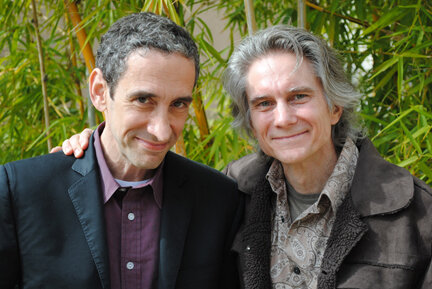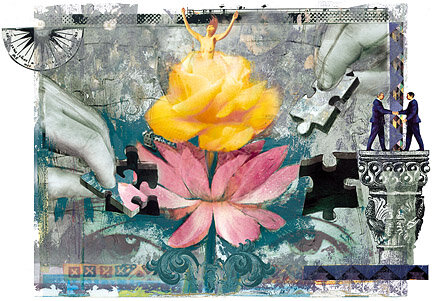Is fate tied to intention?Have you ever noticed that it seems inevitable at times when specific people pop into your life? It feels as if the universe is pushing both of you together. This happened to me recently with Peter Clothier. By his own words, he is a reformed academic, now fifteen years in recovery, he has returned in recent years to teaching, in mostly non-traditional ways: in workshops, continuing groups, and individual coaching and mentoring for artists and writers. I missed his lecture at LCAD last semester, though some of my students made it and enjoyed him immensely. When Clothier's PERSIST: THE BLOG auspiciously jumped into one my Google searches I realized we had strands of art spirit glue connecting us. I contacted him.This man is committed to exploring the possibilities. Look at all his social media. All of it is fascinating. Check him out. You will definitely learn something!His Website.Blogs:TheBuddhaDiaries.comHuffingtonPostPodcast:The Art of OutrageHis new book Persist: In Praise of the Creative Spirit in a World Gone Mad with Commerce is a collection of musings on the art of the creative process.Needless to say, Peter is channeling the goods. He has a presentation and book signing at the Napa Valley Center for Spiritual Living, Sunday May 30. Go!I asked him if he would be kind enough to answer some questions that I have recently been serving up to college students, faculty, Chairs, etc.He graciously agreed! Enjoy.Greg- Where in the individual does art reside?Peter- In the mind, which is everywhere--heart, brain, body, bones, eyes... The mind is the whole package, working all together.G- How do you define artist empowerment?P- It's self-empowerment. No one is going to give it to you, nor even teach it to you--though the teacher can help you find it. It comes only with time, through experience and growing familiarity with the medium and inner knowledge out of which we speak. This is what we mean by an artist's or a writer's "authority."G- That sounds like living from the inside out. Lovely. How would you describe artist sustainability?P- I wrote a whole book about it--or a series of essays which came out as a book this year. It's called "Persist." Persistence is the ability to sustain one's vision and one's sense of purpose, despite all obstacles--and there are many of them in today's culture. Again, this is a quality of mind. It can be developed through a regular practice of discipline. My own practice is meditation--an excellent model for the creative process.G- Meditation is part of my spiritual practice too, and it definitely informs my creative life. Most art colleges focus on teaching conceptual and technical image making skill sets with an eye on preparing artists for the publishing, gallery, and entertainment industries. What could be some alternatives to these corporate models?P- If I were to write an art school curriculum--and I won't be doing that, I quit academia twenty years ago!--I would be sure to include two elements that are most frequently forgotten. The first would have to do with the value of discipline and practice, and of training the mind to focus on those things I want it to do rather than allowing it to wander off on its own whims and fancies. The second would have to do with the holistic quality of the human experience. This sounds a bit romantic, but it's not intended as such. Our educational systems tend to concentrate on the activity of the brain, and too often to cut us off from other parts of our lives which are equally important: the emotional, the physical (yes! the body!) and the spiritual. An integrated vision must incorporate all four of these elements.G- Focus and balance is a key to understanding ourselves, and our art. But in the context of living in a corporate world what can an artist do to weather fluctuating economic factors?P- Breathe. I actually mean that seriously. In our anxiety and our drive to "succeed," we forget to do this and we choke on our own needs and ambitions. For the vast majority of artists, the reward is unlikely to be financial. If you make a painting with the thought of selling it, you're probably in the wrong profession. The trick is to follow one of the great Buddhist teachings, and learn not to get attached to outcomes. If you're an artist and you need money (don't we all?), look elsewhere. If you happen to be one of the fortunate few, congratulations. And don't forget to keep "persisting," not only in your studio work but also in the pursuit of your goals outside the studio. Just don't cling to a single notion of success, especially the financial one--because it may not happen and you have to keep doing it anyway. Because you're an artist, aren't you?G- Keeping your eye on your integrity and your personal vision is vital to peace of mind and creative longevity. However I am also an advocate of making a living from your talent. Personally I think you can have your cake and eat it too! Now how big your cake is depends on you! I have observed over the last two decades the walls breaking down between the so called fine art world and popular art culture. The Low Brow art movement and artists like Takashi Murakami are examples of this. What is your opinion of this evolution? How does it benefit the artist?P- I don't care to make that distinction. Art is art is art. If you're out of the mainstream, you're probably on the right track!G- My sentiments exactly! Any final pearls of wisdom?P- How about: "Read my book?" That's where I keep my pearls. In a nutshell, see my previous answers. To paraphrase Lewis Carroll's Father William, "I have answered six questions and that is enough... Don't give yourself airs. Do you think I can listen all days to such stuff? Be off, or I'll kick you downstairs."Cheers!Now that was English humor!Thank you so much Peter for your insightful answers. I am grateful fate threw us together. Of course I am sure intention had something to do with it! We shall have more conversations about the world of art and its evolution. Peter and I may align on an Artist As Brand workshop in the future. In the meantime peruse his Website, Blogs, and books. Knowledge and wisdom are timeless.To empowerment and our kindred purpose,Greg












